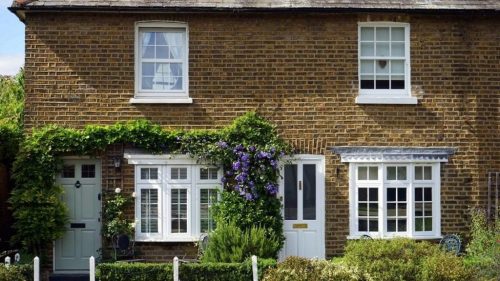Most people are aware of mortgages and property finance in general with mortgages having been used by millions of homeowners for many years and the concept of property finance being well-established. Everyday mortgages are generally used to secure a fixed amount of money against an agreed portion of equity of a property. Bridging loan arrangements are a more specialised process that is not as well established but that is increasing in its popularity.
Whilst traditional mortgages are usually used by homeowners to purchase or refurbish their place of residence, bridging loans are a slightly different offering and therefore may at times need a broker to facilitate its arrangement. For example, a bridging mortgage to be used for business purposes may specialised and experienced corporate finance brokers to arrange it.
Traditional mortgages on the other hand have different requirements. For example, if one is self-employed, an accountant may be required to order finances in a clear and positive way for the prospective mortgage lender to be able to understand the financial position of the applicant (source: Martin Tiano & Co Accountants).
Ultimately however, both a mortgage and a bridging loan have a very important role to play in the wider property lending industry in the UK.
Popular Types of Residential Mortgages
Unlike commercial property finance options and mortgages for buy-to-let purposes, residential mortgages and mortgages for peoples’ main place of residence are deemed Regulated Mortgage Contracts which means that for the most part, their repayment and interest terms are much more favourable as they are designed for a borrower’s main place of residence as opposed to for investment purposes.
Commercial and buy-to-let arrangements on the other hand will have additional arrangement fees, interest payments and clauses; all of which tend to add up, increasing repayment costs.
Everyday Mortgages

Mortgages are the most utilised form of secured property finance in the UK and arguably the world. Usually used in order to purchase a property, the premise of a mortgage is quite simple. The borrower finds a property they desire to buy and assess their income and savings. They will likely need to be able to put down a deposit, which will be a percentage of the property’s value, for example 40%.
Then, they apply for a mortgage with a bank or other lender or broker who will assess their finances, income and financial stability. All criteria being satisfied, the lender will then agree to lend a proportion of the property’s value, for example the remaining 60% plus interest to be repaid over a predetermined period of time. With mortgage amounts often being in the hundreds of thousands of Pounds, it is not uncommon for a mortgage to be repaid over a period of 10 years or more.
The interest on the mortgage is variable too and there are numerous arrangements that can be agreed:
- Tracker Mortgages…
These are mortgages where the interest rate is determined by the Bank of England base rate. This is set by the Bank of England and is subject to change during the year. In effect, if the Bank of England raises interest rates, this will be reflected in the required payments and interest amount on mortgage repayments.
- Fixed Interest…
This is where the borrower and the lender agree to fix the interest rate for an agreed period of time; usually few years. The benefit of these types of arrangements is that should the interest rate be agreed at say 0.25% and the Bank of England then raises rates to 0.5%, the borrower’s interest will remain at the fixed amount for the agreed period of time, after which they may revert to the current interest rate or remortgage. However, a drawback of these types of interest arrangements is that should the interest rate be lowered, the mortgage’s interest will remain fixed too.
- Interest Only Repayments…
These are somewhat less common but they are used. In these cases, the borrower would only repay the interest each month, having to then repay the outstanding balance; the actual loan amount in full at the end of the mortgage’s term. These are often used by those awaiting the sale of a high value asset to cover the repayment amount.
Bridging Mortgages

Bridging loans are different to traditional mortgages in that they are a much shorter term financial arrangement. Also secured against a property, a bridging loan is often used to purchase a property whilst an initial property’s sale is impending or in the process of going through.
For example, a homeowner may be looking to upsize their home and move to a larger property. Having found the property they wish to move to and having put down a deposit on it, they may run into fairly short-term issues. For example, they may have found a buyer who then pulls out of the process late on, breaking the sales ‘chain’ and leaving the current owner in the lurch, having to find a new buyer quickly to avoid losing a deposit of potentially many thousands of Pounds.
In such cases, a bridging loan can be taken out. The homeowner would use the bridging loan to buy their desired property, awaiting the sale of the first one. There is then a period where they effectively own two properties, but once the buyer of the first one is secured and confirmed, the sale amount is used to pay off the majority of the bridging loan, whilst any remaining repayment amount is paid off via the remortgaging of the new property at a much lower rate than the bridging loan.
